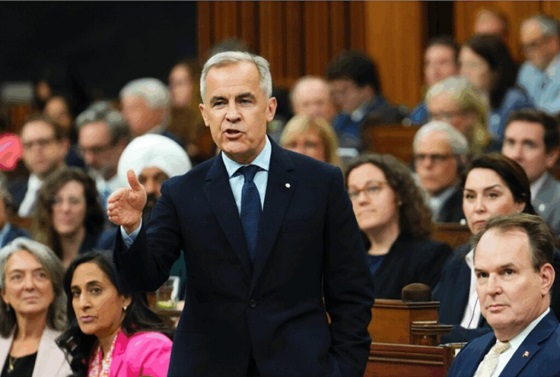Mankind, from time immemorial, has been a seeker of Truth.
Civilizations from the Phoenicians, Egyptians, Romans, and the Mesopotamians to the modern roman empire have searched their world for Truth. While earlier civilizations sought simpler Truths in their limited world view, our advanced ‘modern,’ society seeks more complexities using far different tools with the same boundless curiosity.
Before the modern era, men and women looked for truth in different ways. Young men would set off with the armies and sea traders of their time in search for the answer to the burning desire in their souls, are the stories true? Is there really a whole world to explore? Are their great sea monsters as my grandfather told me?

Others, somewhat less adventurous and more academic, looked to the mysteries of alchemy or spiritual quests and tempted God by turning base lead in to Gold, worshiping false idols or seeking solace in the quiet spaces of monasteries and remote faith communities; all with an eye to Truth. Can gold be made from base metals? Is God, Allah, or Yahweh found in the wilderness or among men in our world? Can we hear the voice of God? How do we reconcile God in our lives?
Amidst the spread of civilization and the rise of the ages or reason and industrialization and technology, the quest for knowledge was not easily satiated with the greater good not always lining up with Truth but rather diversion and deception with Truth often being a casualty.
Most significantly the rise of the internet and information technologies has led to an increased pace of extremism with the left and right seeing greater division and the perceived requirement that there can be no reason or good discussion betwixt the ends of the spectrum.
We have seen this in far greater concentration since 2001 after the events of 911 with so-called conspiracy theories rising immediately. Building on the momentum of the discoveries during that time, previous histories for events dating back to the great depression were released through various sources and previous ‘Truths,’ were contradicted and influenced by current global motivations.
If we consider the current Covid19 crisis, our sources of information can be mainstream media like CNN, ABC, NBC or the BBC or Al Jazeera or Fox. Online, websites like beforeitsnews.com or outofmind.com or web presences of regular news broadcasts can inform readers in many ways. In Canada, we look to the Rebel, CBC, CTV, or regular web news from browsers.
Our newspapers are no longer the haven of true current affairs. Due to shrinking subscribership and advertising, there is no longer space to present multiple viewpoints for decision making. The issue of news bias is also a concern in many countries with censorship rising its ugly red pen.
Our social media world is rife with censorship. YouTube, Twitter, Instagram, and Facebook now all regularly delete content not in keeping with ‘community’ standards. In the US election, many news items from both parties are not given equal treatment while in Canada, many anti-corruption and scandal news items are also given less than fair access to the public or have been deleted.
In the US, Q Anon has been teasing readers with more than 1500 entries filled with coded information seemingly educating readers on current affairs filled with details accurate enough to suggest an inside source.
The BIG questions are simple: Is Covid 19 a hoax? Is it real? Has it been created by the mythical illuminati? Do masks work? Will a vaccine come in our lifetime? Who is responsible for the patients care or payments IF the proposed vaccines do not work? Or is it as dangerous to humanity and the draconian measures imposed are necessary to protect mankind? Is the total makeover of society required to protect us? Are lockdowns and economic control the answer to a biological condition?
Closely tied to the pandemic question is that of the politicians who want to see those behind the scenes brought to justice for their parts in various international crimes including Child trafficking, international drug trafficking, influence peddling, population control and other crimes against humanity.
The question of truth remains, and those with left leanings will incline their ears towards leftist ideologies and the rightists towards the right. Centrists are often criticized for their balanced views and considering both sides of the discussion.
We have witnessed and will continue to witness the great cost to our communities of the divisive nature of the legislation and changing coping strategies suggested by health officials. Families, church congregations, company work forces, sports team fans and employees and many associations have been shattered by our varying reactions to the conflicting ‘facts.’ We can’t forget that we are now also encouraged to report our friends and neighbours who do not follow the ‘rules.’
The sheer financial cost to economies being locked down, global, regional and local is beyond calculation. Couple that with the social cost of the monetary turmoil and the resulting mental illness, overdose deaths, divorce rates, suicide, ‘natural’ deaths due to delayed medical treatment and future potential respiratory conditions triggered by improper and un-necessary mask usage and we have financial numbers that are nearly beyond belief.
This brings us back to the original premise.
We, as human beings who live in our communities, political leaders who lead our cities, states, provinces, and countries want one thing. Mankind, throughout history, all over the world, has searched for ONE thing.
Truth.
Truth about our faith issues. Truth about our politicians and their place in our world. Truth about our future-will our children be able to survive? Truth about our economies and the political policies that affect them. Truth about everything.
The funny thing is that Truth cannot be relative because while times have changed, Truth would have changed and if that is true than we are probably all wrong and if I am right, you may be wrong and one of us is going to face eternity paying for poor decisions. Not much hope there. Therefore, Truth cannot change and moreover, it is not relative, it is absolute. It just IS. No options. And for Truth to be consistent for millennia, it cannot be based on circumstances, but rather something or someone who IS eternal and DOES NOT CHANGE.
Those who live their lives based on relative truths waiver like a ship on the ocean.
It has been said that there are no atheists in foxholes. Throughout the world, light is dispelling the darkness.

What is Truth
Just as Pontius Pilate asked Jesus when he stood before him prior to crucifixion, the question is the same and always will be be…
What is Truth?
Answer the question carefully. Your life depends on it.
Related






















